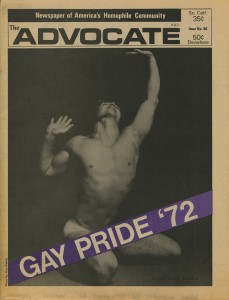Counterculture refers to a movement and lifestyle that established itself as fundamentally different from prevailing attitudes and norms. Over the course of the 1960s, many college students were influenced by this social movement, which contributed to a spirit of dissent that combined with anger over the Vietnam War to foment widespread demonstrations on campuses all across the country. The counterculture that emerged during the Vietnam War era stands out as a unique movement in American history, but it drew upon decades of expanding opposition to racism, imperialism, traditional gender roles, urbanization, and the unequal distribution of wealth. Many white middle-class students joined members of marginalized groups such as the urban poor, women, and minorities who were empowered through the counterculture to express long-standing dissatisfaction with the secrecy and militarism that put U.S. troops in Vietnam in the first place.

One of the most visible aspects of the 1960s and 1970s counterculture was the popularization of recreational drug use. Pamphlets such as The Seed widely advertised the sale of illicit drugs such as marijuana and LSD.
One of the more well-known hallmarks of the counterculture movement was an increase in drug use. Many mind-altering substances, such as marijuana and LSD, were popularized and celebrated during this era for their effects on users. Those seeking peace embraced the relaxed highs that these drugs could provide. Drug use permeated the student wing of the antiwar movement and substance use became more or less indicative of certain lifestyle decisions. This pricing list for weed and acid shows the market that developed around this newly popularized escape.
Counterculture also included a reexamination of gender roles and sexual ethics. Though most Americans continued to maintain traditional views regarding sexual orientation, homosexuality gained greater acceptance among those influenced by the counterculture movement. New magazines like The Advocate sprung up to celebrate “Gay Pride” and publicize issues of concern to the LGBT community.

The counterculture of the Vietnam War era created an outlet for the gay community to speak out. This magazine was first published locally as The Los Angeles Advocate in 1967 after police raids at the city’s Black Cat Tavern. By 1969, it was renamed The Advocate and published nationally. It is still in publication today.
Alternative magazines were not the only mechanisms for counterculture. The arts also became a tool for spreading countercultural ideas and attitudes. Opposition to the Vietnam War found its way into visual art and music, allowing it to be consumed by a much wider audience. The fact that songs such as “Fortunate Son,” “Eve of Destruction,” and “Give Peace a Chance” found as much popularity as they did points to the general success of counterculture in utilizing different mediums. Indeed, many of these songs, as well as the artists who wrote and recorded them, enjoy enduring popularity even today. More visual mediums – such as paintings and murals – allowed the ideas of the counterculture movement to be communicated broadly in public spaces.
